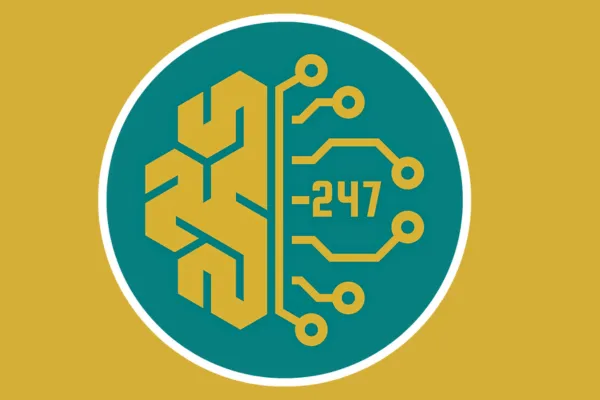
What Brand Loyalty Really Means in 2025 – And How to Build It to Keep Customers Coming Back
“Satisfaction is a rating. Loyalty is a brand.” - Shep Hyken
Introduction:
Loyalty tools like points, stamp cards, and digital rewards are incredibly useful. They remain one of the most powerful ways to bring customers back and keep them engaged. But in 2025, loyalty is not just about rewarding repeat visits. It is about creating a brand experience that feels personal, thoughtful, and consistent.
For service-based businesses, this opens up a real opportunity. Loyalty programmes do not need to be replaced. They need to be enhanced. When you combine the reliability of structured rewards with smart communication, data-driven insights, and emotional connection, you turn loyalty into something much more powerful.
Whether you run a restaurant, salon, gym, or clinic, the challenge is no longer simply how to track loyalty. It is how to make customers want to stay loyal in the first place.
So what does brand loyalty really mean in 2025? And how can modern businesses build it in a way that feels authentic, consistent, and long-lasting?
Let’s take a closer look.
Let's break it down in five ways
1. Loyalty is More Than Just a Transaction
Loyalty tools like points and rewards play a valuable role. They encourage repeat visits and help track engagement. But in 2025, loyalty is about more than earning rewards. It is about how the customer feels each time they interact with your brand.
People want to feel known, not processed. They return to businesses that remember their name, value their time, and understand their preferences. A personalised message or a small gesture can do more for loyalty than any discount code.
A strong loyalty programme supports this. It gives structure to your efforts, but it is the emotional layer that keeps people coming back.
2. Loyalty Starts Long Before the Sale
Loyalty is not built at the checkout. It starts the moment someone hears about your brand and continues through every interaction that follows.
From the ease of booking to the clarity of communication, each step shapes the customer’s overall experience. A smooth journey builds confidence. A thoughtful follow-up builds trust. When everything works together, customers are far more likely to return.
Loyalty programmes do not replace this journey. They support it. They help you deliver consistent, connected experiences across all touchpoints.
3. Small Moments Create Lasting Loyalty
Loyalty is rarely about big gestures. It is almost always the result of small, thoughtful moments.
A thank-you message that feels genuine. A birthday reward that arrives on time. A quick check-in after a quiet period. These are the kinds of details that make people feel appreciated.
Digital loyalty tools make it easier to deliver these moments at scale. They help you stay on top of timing, preferences, and customer habits, so you can focus on building real relationships.
4. Good Loyalty is Powered by the Right Data
Loyalty tools are most effective when they are built on customer data that is willingly and clearly shared.
This is where digital loyalty platforms stand out. Unlike stamp cards or manual records, they give you insight into how customers interact with your business. You can track visits, identify trends, and tailor your messages based on real behaviour.
This does not just make marketing smarter. It makes your service feel more personal. Customers notice when you respond to their needs, not just send generic promotions. When used well, data strengthens loyalty without making things feel automated.
5. Loyalty is a Loop, Not a Ladder
The old model of loyalty worked like a ladder. People climbed step by step towards a reward, then started again. Today, loyalty is more fluid.
Customers engage, enjoy a great experience, receive something of value, and come back because it felt good to do so. Each interaction feeds the next. The loop strengthens over time.
Loyalty tools should support this rhythm. They should help you stay in touch, reward at the right moments, and keep the relationship active even between visits.
Conclusion
Loyalty tools are more important than ever. But they work best when they are part of something bigger, a complete experience that makes customers feel valued every time they connect with your brand.
In 2025, loyalty is not just about what you give. It is about how you communicate, how you follow up, and how you build trust over time.
For service-based businesses, the opportunity is clear. Combine a well-designed loyalty system with consistent, human connection, and you will not just retain customers. You will turn them into advocates.
Loyalty starts with structure. It grows through emotion. And it lasts when you bring both together.
Further Insight: The Psychology of Brand Loyalty
Ready to Turn Loyalty into a Lasting Experience
If this article has helped you see loyalty in a new light, the next step is to put it into practice. Loyalty is not just about rewards. It is about creating a journey that keeps customers coming back because the experience feels personal, consistent, and thoughtful.
To help you get started, we are offering a free 14-day trial of our digital loyalty programme. This is your no-obligation chance to see exactly how loyalty could work for your business, with real results you can measure.
Here’s what your trial includes:
Access to our easy-to-use platform with full support for 14 days
There is no cost and no commitment. Just a practical way to experience how loyalty can increase repeat visits and customer spend.
Visit https://loyalty.reach247.co.uk/registration to start your free 14-day trial today.
Let your loyalty journey begin with something real, not just theoretical.
Reach247 is a trading name of Reach247 Digital Ltd, registered in England and Wales under company number 15798046